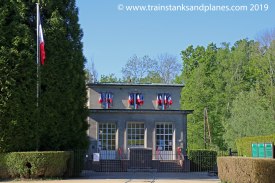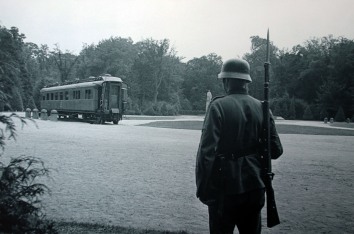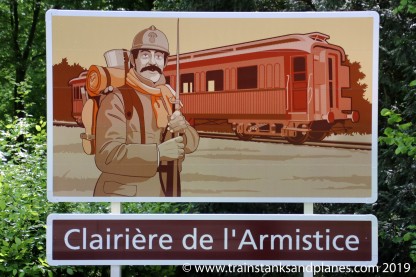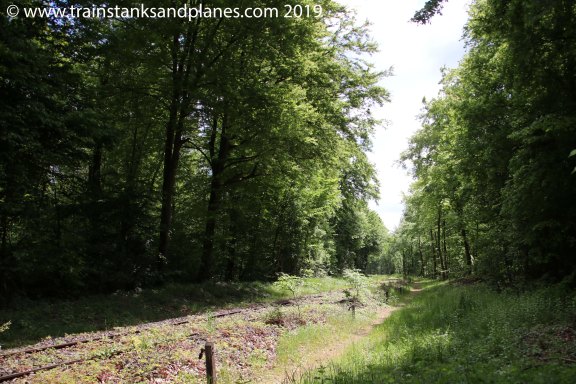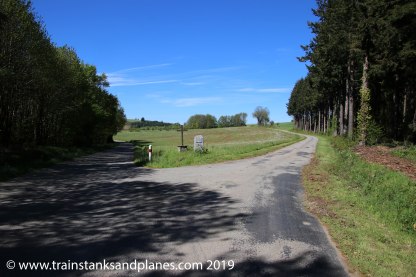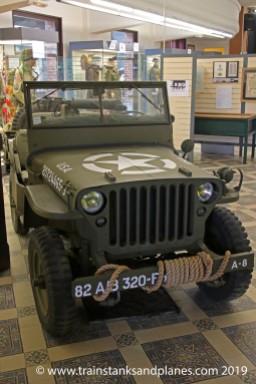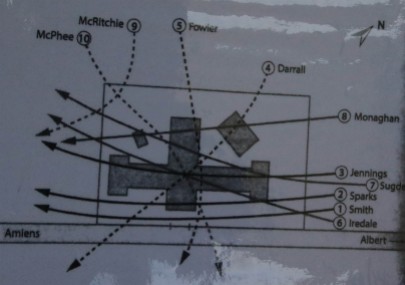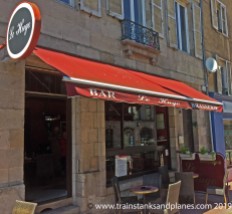So it’s May 2019 and Tony, Anne, Dee and I are off on a Leger battlefield tour France Under the Jackboot. As might be gathered from the title the focus of the tour was events in France under Nazi occupation in World War 2. Particular themes included capitulation, deportation and resistance.
Our guide Norman Sibbald was exceptional and shared his knowledge in a concise, easy to understand and sensitive manner. I say sensitive as some of the material we covered dealt with the horrendous way the Nazi regime treated Jewish people and other people labelled as ‘undesirable’ or ‘terrorists’. At times it was impossible to see this story as simply history.
As I write these words I am still very aware of the sensitivity of some of this history, even after almost 80 years, due to the dreadfulness of what took place. Please dear reader keep this in mind when viewing my photographs and the brief annotations and captions that go with them
Capitulation
Compiegne Forest
On the 11th November 1918 the Armistice giving victory to the Allies was signed on board a railway carriage parked in a Compiegne Forest Clearing. Roll the clock forward some 22 years to June 1940 and in the same railway carriage, in the same location another armistice was signed, this time with Nazi Germany as the victor.
Today the location is known as the Glade of the Armistice and is beautifully maintained as a museum and a place of great historical significance. There is a still a railway carriage, but not the original and not in the exact same location as in 1918 and 1940. The original carriage was taken to Germany by the Nazis and destroyed in a Allied bombing raid toward the end of the war. The replacement carriage is of the same type and indeed built in the same batch as the original and for the sake of preservation is a few hundred yards away in a purpose built museum.
A visit to the Glade of the Armistice is very worthwhile and certainly evocative of the momentous events that took place there.
Deportation
Train to Buchenwald
Not far from the Glade of the Armistice is another clearing in the Compiegne Forest in which today stands a moving monument. From this spot in the early 1940s Jewish people from Paris were packed on to railway wagons and deported from France to concentration camps in Nazi Germany and other Nazi German occupied countries.
Today this spot is tranquil and peaceful with a little used railway line running through it. Of course it was not always so and as 21st Century visitors we are reminded by the monument of what has taken place here.
Drancy
Drancy is a suburb of Paris. The particular location in Drancy that I portray in my images below is an amazing place – but not in a nice way. The casual visitor passing through, especially if in a hurry or of an incurious nature, could easily see just apartment accommodation from the 1930s.
In fact this particular spot in Drancy is not just 1930s accomodation, rather it is the very complete remains of what was once Drancy concentration camp.
Interestingly our tour described the camp at Drancy as a concentration camp whereas many other sources refer to it as an internment camp. Whatever the correct description the result was the same, Jewish people from Paris were brought to the camp and then, usually, shipped off to other, either work or death, camps. Today what took place here in the early 1940s is recognised by a number of thought provoking memorials.
Oradour-sur-Glane
At 2pm on the 10th June 1944, just 4 days after the Allies landed in Normandy to begin the liberation of Europe, Nazi Waffen SS soldiers entered and the surrounded the village of Oradour-sur-Glane. By the end of the day the village was destroyed and 642 of its inhabitants were dead murdered by the Nazi Waffen SS. Only 1 woman and 5 men escaped.
There has never been any definitive, specific reason why this was done to Oradour. Contemporary historians suggest that it was not a centre for resistance. Two days before a nearby railway bridge had been blown up by the resistance killing two German soldiers, also a German officer had been taken prisoner close to St Leonard-de-Noblat and it is thought these acts were the catalyst for the destruction of the village.
At the end of the war it was decided to keep the village as it was left on that dreadful day, with just the shells of buildings and no permanent residents. The village can be visited and is a permanent memorial to those that died and a reminder of the madness that war can bring.
Resistance
Violette Szabo
Perhaps one of the most well known resistors was Violette Szabo, her story being produced by the Rank Organisation as the feature film Carve Her Name With Pride named after the book by R.J. Minney. We specifically followed the route Violette took on her second mission to France starting with the location where she landed and finishing with the place where she was captured. This included driving along the road Violette took on her last trip when travelling by car from the village of Sussac. Her intended destination was Pompadour, however the journey ended when the car ran into a German roadblock at Salon-la-Tour.
Landing and shelter
Violette landed by parachute on the night of 7th / 8th June 1944 in the Limoges area and took shelter in the village of Sussac. The images below show the landing site and village.
Ambush and capture
The images below show where Violette was ambushed and captured.
After The Battle Number 86 gives an excellent, well illustrated account of Violette’s activities with SOE and her final mission.
Museums
We visited the excellent Musee de la Resistance et de la Deportation de Picardie. As may be gathered from the name, the museum focused on French resistance to the German occupation. We were taken around the museum by a very knowledgeable local guide who put the exhibits into context and was able to answer all of our questions. At the end of the visit we were given ‘free time’ to revisit displays of particular interest and the large exhibits outside.
Operation Jericho – The Amien Road
On 18th February 1944 18 De Havilland Mosquito FB VI fighter-bombers attacked the prison at Amien in Northern France, this is now popularly referred to as Operation Jericho. The aim of the raid was to help French resistance members, many of whom were scheduled for execution, to escape. The plan called for the Mosquitoes, flying at very low level, to breach the prison outer wall and blow a hole in cell blocks in which the prisoners were held, thereby allowing them to escape. In addition the raid was scheduled for lunchtime to allow the refectory where the German guards would be having lunch to be targeted.
In recent times the reason for the raid has been controversial. Some commentators have suggested that the stated reason for the raid, to assist the French and help those arrested by the Nazis escape a nasty end, is false. There have been several ‘conspiracy’ theories suggesting that the raid was carried out for reasons other than those stated. Having read a number of books on the subject I’m convinced that the raid was carried out for the reason stated, I.E to help our French allies and the resistance members condemned by the Nazis.
Today the prison is still in use. The outer walls are still in place from the 1940s and the repaired sections where the bombs struck can still be seen. The Cell block is however new, rebuilt after the war ended. Built against the wall is a monument to those brave French men and women imprisoned in 1944.
There is a good deal of information available for those interested in reading more, I can do no better than suggest:
- After the Battle No. 28 – Operation Jericho – The Amiens raid
- The Jail Busters – Robert Lyman
The first publication is very good for the story of the actual attack and for giving a ‘then and now’ view, albeit this is now a good few years out of date for the ‘now’ aspect. The second publication is really an excellent read and the first half of the book truly puts the raid into the larger perspective.
Accommodation
We stayed at 3 hotels while in France, all organised by Leger as a part of the tour. All were 3 star, or above, and all very comfortable. We mostly ate in restaurants that were adjacent or close to the hotel for the night, once again all the restaurants were of a good quality serving tasty food and with a good selection of beers and wines (but of course!).
One cafe did particularly stand out this being the Le hugo in Limoges. Our visit was brief this being a lunchtime stop, but the service we received and the quality of the food was really exceptional.
If you are ever in Limoges and looking for a place to rest and refresh, I have no hesitation in recommending Le Hugo. See my Trip Advisor review for more about our lunch at Le Hugo.
And finally…
The images and narration on this page are not a full account of our tour. We saw a good number of other memorials and fine places such as Arras (beautiful town square), La Necrople Nationale de Cambronne-les-Ribecourt, Camp de Royallieu Memorila de l’ Internment du deportation and others.
In my introductory paragraph I shared my opinion that some of the material on this tour was sensitive, sensitive in a way that i have not experienced or felt on any other battlefield, battlefield tour or historic military site. I can’t say that I enjoyed seeing Drancy or Oradour Sur Glane, but nevertheless these places should be visited, the people who suffered should be remembered by those of us that have come after and for these reasons I am very glad to have had the experience.
To end on a happy note here is a very short video taken in the lounge at the back of our coach. It begins by showing the road over which Violette Szabo took her last journey and ends showing showing my 3 fellow explorers and ‘agents’.
And very finally me in Arras doing some camera maintenance over a light lunch!

My thanks go to my fellow agents for being excellent company and to our coach crew, in particular Norman, for a very relaxing, informative and thought provoking trip.
I dedicate this page to all those unfortunate people in France who suffered under the Nazi occupation from 1940-44 and especially to all those brave resistance fighters who refused to be cowed and contributed to the final Allied victory.




